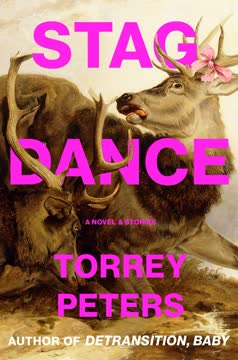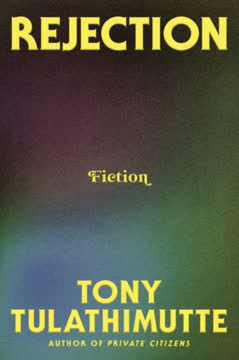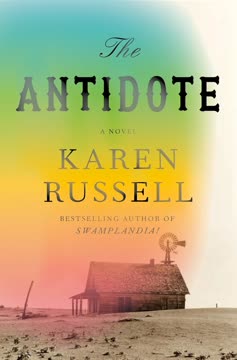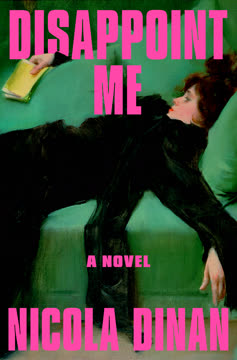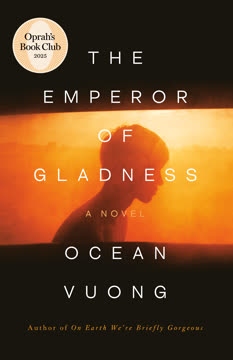Plot Summary
Hormones for the Girls
In a near-future Midwest devastated by a mysterious contagion, hormones—especially estrogen—are tightly rationed and have become a form of currency and survival. Trans women, blamed for the outbreak, are forced to the margins, scavenging for black-market hormones produced by genetically modified pigs. The Protagonist ("Babe"/Zoey/Krys), a trans woman, navigates a world where gender, survival, and power are inextricably linked, relying on dangerous men like Keith for her supply. The scarcity of hormones and the social stigma create a tense, desperate environment where every transaction is fraught with risk and humiliation, and the lines between gender, identity, and survival blur.
T4T: Trans for Trans
The concept of "t4t"—trans for trans—emerges as both a romantic and political ethos among trans women. Lexi, a charismatic and sometimes abrasive leader, champions the idea that trans women should love and support each other above all else. Yet, the reality is more complicated: old wounds, jealousy, and shame persist. The Protagonist ("Babe"/Zoey/Krys)'s relationship with Lexi is fraught with longing, rivalry, and the pain of exclusion. T4T becomes a symbol of both utopian hope and the messy, often cruel reality of community, where solidarity is as likely to fracture as to heal.
The Pig Vaccine Plot
A radical plan is hatched: Raleen, a brilliant but troubled trans scientist, develops a vaccine based on a pig castration drug that, when injected, causes the human body to attack its own sex hormones. Lexi and Raleen test it on themselves, then forcibly inject the Protagonist ("Babe"/Zoey/Krys), making her "Patient Zero." The twist: the final version is contagious, spreading through antibiotic-resistant bacteria. The goal is to create a world where everyone, cis or trans, must choose their gender and rely on external hormones. The act is both revenge and revolution, a desperate bid to upend the gender order by making everyone trans, but it also unleashes chaos and guilt.
Patient Zero's Scar
The Protagonist ("Babe"/Zoey/Krys) is forcibly injected and becomes the first contagious carrier. The emotional fallout is immediate: rage, disbelief, and a sense of irreversible transformation. Raleen confesses the truth—there is no cure, and the Protagonist ("Babe"/Zoey/Krys) will spread the condition to others. The scar from the injection becomes a symbol of both victimhood and complicity, as the Protagonist ("Babe"/Zoey/Krys) grapples with the knowledge that she is now the vector for a new world order, one built on forced transition and the collapse of old gender certainties.
Seattle's Contagion Day
As the contagion spreads, Seattle's trans community is both ground zero and a microcosm of the world's new reality. Old friendships and alliances are tested. Lexi and the Protagonist ("Babe"/Zoey/Krys)'s relationship, once intimate, is now defined by betrayal and regret. The city's queer spaces become sites of both refuge and conflict, as trauma, anger, and the need for belonging collide. The Protagonist ("Babe"/Zoey/Krys)'s attempts to find love and safety are continually undermined by the violence and suspicion that now define trans life in the post-contagion world.
Love, Betrayal, Survival
The narrative flashes back to earlier, more innocent times: the Protagonist ("Babe"/Zoey/Krys)'s failed relationships with cis partners, the loneliness that drove her to Lexi, and the complicated dynamics of trans love. Sex, shame, and the longing for validation are ever-present. The Protagonist ("Babe"/Zoey/Krys)'s inability to fully accept or reciprocate Lexi's love becomes a source of lasting regret, while Lexi's own wounds and self-destructive tendencies mirror the broader struggles of the community. Survival is not just physical but emotional, as every connection carries the risk of betrayal or abandonment.
Stag Dance: Gender Masquerade
In a mythic, Western-inflected interlude, a logging camp stages a "stag dance" where men don triangles of fabric to play at being women, and courtship rituals are upended. The Protagonist ("Babe"/Zoey/Krys), a giant, ugly axeman known as "Babe," dons the triangle, seeking to be desired as a woman. Rivalries, jealousies, and moments of tenderness play out in a world where gender is both performance and deep need. The dance becomes a metaphor for the longing to be seen, loved, and made whole, even in the most inhospitable circumstances.
The Agropelter's Curse
The camp is haunted by the legend of the Agropelter, a supernatural figure blamed for mysterious deaths. The Agropelter becomes a symbol of the monstrousness projected onto those who transgress gender norms. In a fevered, hallucinatory climax, the Protagonist ("Babe"/Zoey/Krys) is shot and exiled, blamed for the camp's downfall. The Agropelter's curse is revealed as the violence society inflicts on those who refuse to conform, and the Protagonist ("Babe"/Zoey/Krys)'s transformation into the Agropelter is both punishment and liberation—a monstrous, vengeful, and finally self-possessed figure.
The Chaser: Teenage Obsession
A coming-of-age story unfolds: a teenage boy's obsessive, secretive relationship with his effeminate roommate, Robbie. Their sexual encounters are fraught with shame, power imbalances, and the fear of exposure. The Protagonist ("Babe"/Zoey/Krys)'s inability to accept or reciprocate Robbie's love leads to betrayal and social exile. The dynamics of desire, gender, and cruelty are laid bare, showing how early experiences of shame and longing shape adult identity and relationships.
Farm Crew and the Piglet
On a school farm, the Protagonist ("Babe"/Zoey/Krys) and Robbie are forced to kill a wounded piglet. The act is botched, leading to prolonged suffering and a cascade of guilt and blame. The incident becomes a crucible for the Protagonist ("Babe"/Zoey/Krys)'s emerging sense of self—as both victim and perpetrator, as someone capable of violence and remorse. The piglet's death echoes through the narrative, a symbol of innocence lost and the ways in which cruelty is both inflicted and internalized.
Violence, Shame, and Exile
The aftermath of the piglet's death spirals into a disciplinary crisis. The Protagonist ("Babe"/Zoey/Krys) is accused of assault, both on the animal and on Robbie, and is ultimately expelled. Robbie's silence—his refusal to defend or condemn—becomes its own form of power, leaving the Protagonist ("Babe"/Zoey/Krys) isolated and shamed. The expulsion is both literal and metaphorical: a casting out from community, family, and the possibility of redemption. The scars of this exile shape the Protagonist ("Babe"/Zoey/Krys)'s future relationships and sense of self.
Vegas Masker: Fetish and Fantasy
In a contemporary interlude, the Protagonist ("Babe"/Zoey/Krys) attends a cross-dresser and trans party in Las Vegas, where she encounters Felix ("The Masker"), a "masker" who fetishizes femininity through silicone suits and roleplay. Their relationship is a swirl of fantasy, power games, and betrayal. The lines between fetish and identity, performance and reality, blur. The Protagonist ("Babe"/Zoey/Krys) is both drawn to and repelled by Felix ("The Masker")'s ability to become anyone, to wear and shed masks at will. The encounter forces her to confront her own desires, fears, and the ways in which trans identity is policed both from within and without.
Sally's Sisterhood
Sally, an older trans woman and former DEA agent, becomes a mentor and protector to the Protagonist ("Babe"/Zoey/Krys). Fiercely proud of her womanhood, Sally draws sharp lines between "real" trans women and fetishists like Felix ("The Masker"). Her sisterly care is both nurturing and suffocating, as she tries to shepherd the Protagonist ("Babe"/Zoey/Krys) toward a "proper" transition and acceptance. The generational divide between Sally's hard-won womanhood and the Protagonist ("Babe"/Zoey/Krys)'s more fluid, ambivalent identity highlights the tensions within trans community—between assimilation and subversion, safety and risk.
Forced Femme Fantasies
The Protagonist ("Babe"/Zoey/Krys)'s inner life is shaped by forced feminization erotica—a genre of stories where men are made into women, often against their will, and come to love it. These fantasies are both a source of pleasure and shame, a way to explore desire and a trap that keeps the Protagonist ("Babe"/Zoey/Krys) from fully embracing her own agency. The line between fantasy and reality blurs, as real-life encounters with men like Felix ("The Masker") echo the scripts of these stories, for better and worse.
Betrayal on the Party Bus
A climactic confrontation unfolds on a party bus in Vegas. Sally enlists the Protagonist ("Babe"/Zoey/Krys) in a plot to have Felix ("The Masker") arrested for wearing a mask in a casino, exploiting legal technicalities and community divisions. The Protagonist ("Babe"/Zoey/Krys), torn between loyalty to Sally and desire for Felix ("The Masker"), ultimately betrays Sally, leading to her public humiliation and arrest. The scene is a microcosm of the book's larger themes: the impossibility of pure solidarity, the ways in which desire and shame drive us to hurt those we love, and the high cost of belonging.
The Triangle's Power
Throughout the narrative, the triangle—a simple piece of fabric worn at the crotch—becomes a potent symbol of gender, desire, and the longing to be seen. In the stag dance, it marks the wearer as a woman to be courted; in the present, it is a badge of both pride and vulnerability. The triangle's power lies in its ability to transform the wearer, to make visible the invisible, to demand recognition and love. Yet, it is also fragile, easily torn, and the source of both joy and pain.
Apologies and Aftermath
In the aftermath of betrayal and violence, the characters seek apologies and forgiveness, but the wounds run deep. The Protagonist ("Babe"/Zoey/Krys) and Lexi confront their shared history, their failures to love and protect each other, and the ways in which shame and pride have kept them apart. The possibility of reconciliation is real but limited; the scars of the past cannot be erased, only acknowledged and carried forward.
Endings and New Beginnings
The book ends with a sense of hard-won survival. The world is irrevocably changed, but the characters persist—scarred, wiser, and still searching for love, belonging, and a place to call home. The lessons of the past—about the dangers of shame, the necessity of solidarity, and the power of self-acceptance—linger, offering hope that even in a broken world, new beginnings are possible.
Characters
The Protagonist ("Babe"/Zoey/Krys)
The central figure of the book is a trans woman whose journey spans post-apocalyptic survival, mythic tall tales, and contemporary queer life. She is marked by shame, longing, and a deep desire to be seen and loved as a woman. Her relationships—with Lexi, Robbie, Sally, Felix ("The Masker")—are fraught with betrayal, regret, and the search for belonging. Psychologically, she is both victim and perpetrator, capable of cruelty and tenderness, haunted by the scars of exile and the hope of transformation. Her development is a slow, painful movement toward self-acceptance, even as she remains deeply ambivalent about her own desires and worth.
Lexi
Lexi is a forceful, visionary trans woman who dreams of a world where trans girls love and protect each other (t4t). She is both inspiring and infuriating, capable of great generosity and deep cruelty. Her relationship with the Protagonist ("Babe"/Zoey/Krys) is central: once lovers, now estranged, their bond is defined by mutual shame, longing, and the inability to fully accept or forgive each other. Lexi's psychological complexity lies in her mix of bravado and vulnerability, her need to be both included and in control, and her deep wounds from a world that refuses to see her.
Raleen
Raleen is a trans woman and molecular biologist whose invention of the pig-based vaccine sets the plot in motion. She is socially awkward, often overlooked, and driven by a mix of revenge, idealism, and desperation. Her actions—testing the vaccine on herself and others, unleashing a contagious gender revolution—are both heroic and monstrous. Raleen embodies the dangers and possibilities of trans ingenuity in a hostile world, and her psychological profile is one of isolation, longing for recognition, and the tragic consequences of unchecked ambition.
Sally
Sally is an older trans woman, a former DEA agent and professional bowler, who becomes a mentor and "big sister" to the Protagonist ("Babe"/Zoey/Krys). She is fiercely proud of her womanhood, quick to draw boundaries between "real" trans women and fetishists, and deeply invested in the idea of sisterhood. Sally's psychological complexity lies in her mix of nurturing care and rigid gatekeeping, her loneliness, and her need to protect the next generation from the pain she has endured. Her relationship with the Protagonist ("Babe"/Zoey/Krys) is both loving and suffocating, a source of strength and conflict.
Felix ("The Masker")
Felix ("The Masker") is a cis man who fetishizes femininity through silicone masks and roleplay. He is seductive, manipulative, and ultimately dangerous—a figure who both fulfills and exploits the Protagonist ("Babe"/Zoey/Krys)'s fantasies. Felix ("The Masker")'s psychological profile is one of compartmentalization: he maintains a "normal" life as a doctor and family man, while indulging his desires in secret. His ability to become anyone, to wear and shed identities at will, makes him both alluring and terrifying—a symbol of the dangers of desire unmoored from empathy or accountability.
Robbie
Robbie is the Protagonist ("Babe"/Zoey/Krys)'s teenage roommate and first love/obsession. Soft, pretty, and effeminate, Robbie is both victim and manipulator, wielding his vulnerability as a form of power. His refusal to defend or condemn the Protagonist ("Babe"/Zoey/Krys) after their relationship implodes becomes a source of lasting shame and exile. Robbie's psychological complexity lies in his ability to both crave and reject intimacy, to be both wounded and wounding, and to haunt the Protagonist ("Babe"/Zoey/Krys)'s sense of self long after their relationship ends.
Keith
Keith is a post-apocalyptic "T-slab" farmer who controls the black-market hormone supply. He is aggressive, misogynistic, and oblivious to the Protagonist ("Babe"/Zoey/Krys)'s true identity. Keith represents the dangers and humiliations faced by trans women in a world where survival depends on the whims of men like him. Psychologically, he is both a figure of power and a symbol of the violence that underpins gender hierarchies.
Lisen
Lisen is a beautiful, saucy, and enigmatic figure in the stag dance narrative. Desired by all, she is both rival and mirror to the Protagonist ("Babe"/Zoey/Krys), embodying the longing to be seen as beautiful and the pain of being overlooked. Lisen's psychological complexity lies in her ability to wield her desirability as both shield and weapon, and in her own vulnerability beneath the surface.
Daglish
Daglish is the charismatic, dangerous leader of the logging camp in the stag dance. He is both protector and predator, capable of tenderness and violence. His relationships with both the Protagonist ("Babe"/Zoey/Krys) and Lisen are marked by power imbalances, longing, and betrayal. Daglish's psychological profile is one of authority, secrecy, and the inability to fully love or be loved.
Stag Dance Camp Jacks (Schuyler, Frohms, Mikkels, etc.)
The various men of the logging camp serve as a chorus, embodying the rough, competitive, and often cruel world of masculinity. They are both obstacles and objects of desire, their attitudes toward gender and difference shaping the Protagonist ("Babe"/Zoey/Krys)'s journey. Psychologically, they represent the spectrum of male responses to transgression: from violence and mockery to moments of unexpected tenderness or solidarity.
Plot Devices
Nonlinear Narrative and Genre Shifts
The book is structured as a series of interlinked novellas, each with its own genre and tone: post-apocalyptic survival, tall tale, coming-of-age, contemporary queer drama. This nonlinear, fragmented approach allows the author to explore trans experience from multiple angles, highlighting the ways in which identity is constructed, deconstructed, and reconstructed over time. The shifts in genre and perspective mirror the instability and fluidity of gender itself.
Symbolism of the Triangle
The triangle—a piece of fabric worn at the crotch—recurs as a symbol of gender, desire, and the longing for recognition. It is both a badge of pride and a source of vulnerability, capable of transforming the wearer and marking them for both love and violence. The triangle's power lies in its ability to make visible what is usually hidden, to demand acknowledgment, and to catalyze both joy and pain.
Foreshadowing and Folklore
The use of folklore (the Agropelter, tall tales, murder ballads) foreshadows the violence and exile that await those who transgress gender norms. These stories within stories serve as both warnings and mirrors, reflecting the ways in which society creates monsters out of those it cannot understand or accept. The Protagonist ("Babe"/Zoey/Krys)'s transformation into the Agropelter is both a fulfillment of the curse and a reclamation of power.
Forced Feminization and Erotic Fantasy
The motif of forced feminization—both in the Protagonist ("Babe"/Zoey/Krys)'s inner life and in her relationships with men like Felix ("The Masker")—serves as a lens for exploring the complexities of trans desire
Last updated:
FAQ
Synopsis & Basic Details
What is Stag Dance about?
- A Trans Odyssey: Stag Dance is a collection of four interconnected novellas that explore the complex, often contradictory experiences of trans womanhood across different genres and timelines, from a post-apocalyptic future where hormones are currency to a mythic logging camp and contemporary Las Vegas.
- Identity in Flux: The book delves into themes of gender, desire, shame, and belonging, following a protagonist (who takes on various names like "Babe," "Zoey," and "Krys") as she navigates relationships, betrayals, and transformations in a world that constantly challenges her sense of self.
- Survival and Self-Creation: At its core, the narrative is about survival—not just physical, but emotional and psychological—as characters grapple with societal pressures, internal conflicts, and the relentless pursuit of self-definition in the face of a world that often seeks to define or erase them.
Why should I read Stag Dance?
- Unflinching Honesty: Torrey Peters offers a raw, unflinching, and often uncomfortable look at trans experience, moving beyond simplistic narratives to explore the messy, contradictory, and sometimes dark aspects of identity, desire, and community.
- Genre-Bending Innovation: The book masterfully shifts between speculative fiction, Western tall tale, coming-of-age drama, and contemporary realism, demonstrating Peters's versatility and using genre as a lens to illuminate different facets of trans life.
- Provocative Emotional Depth: Readers seeking a story that challenges conventional notions of gender, explores complex power dynamics, and delves into the psychological intricacies of longing, shame, and self-acceptance will find Stag Dance deeply resonant and thought-provoking.
What is the background of Stag Dance?
- Post-Contagion Society: The framing narrative of "Infect Your Friends and Loved Ones" is set seven years after a mysterious contagion, which is revealed to be a human-engineered virus that causes the body to cease producing sex hormones, forcing everyone to rely on external hormone therapy. This creates a new societal structure where trans women, blamed for the contagion, are marginalized, and hormones become a vital, scarce resource.
- Queer Theory in Practice: The book is deeply informed by queer and trans theory, exploring concepts like "t4t" (trans for trans) relationships, the fluidity of gender, and the policing of identity, often through exaggerated or allegorical scenarios that push these ideas to their extreme.
- Author's Personal History: As noted in the acknowledgments, Peters wrote these pieces over ten years to "puzzle out, through genre, the inconvenient aspects of my never-ending transition—otherwise known as ongoing trans life," drawing on personal experiences and reflections on trans community, sexuality, and the body.
What are the most memorable quotes in Stag Dance?
- "In the future, everyone will be trans.": Lexi's chillingly prophetic statement in "Infect Your Friends and Loved Ones" (p. 10) encapsulates the radical, almost utopian, vision behind the contagion, highlighting the desire to dismantle cisnormativity by making gender choice universal, albeit through coercive means.
- "I always want to be the girl.": Robbie's confident declaration in "The Chaser" (p. 34) is a pivotal moment that redefines the power dynamic in his relationship with the narrator, revealing a self-awareness and agency that subverts the narrator's initial assumptions about their dynamic and his effeminacy.
- "His slap is the most feminizing thing that has ever happened to me, the most pure forced feminization of my life.": The narrator's shocking internal monologue in "The Masker" (p. 170) reveals the complex, often disturbing, interplay of desire, power, and self-perception, where violence can paradoxically fulfill a deep-seated fantasy of forced feminization, challenging conventional notions of consent and pleasure.
What writing style, narrative choices, and literary techniques does Torrey Peters use?
- Visceral, Sensory Prose: Peters employs a raw, earthy, and highly sensory writing style, particularly evident in "Stag Dance" and "The Chaser," using vivid descriptions of bodily sensations, smells, and physical environments (e.g., "the dirt smells fecund," "the tang of blood") to immerse the reader in the characters' experiences.
- Nonlinear Narrative and Genre Shifts: The book's fragmented, novella-based structure allows for a multi-faceted exploration of the protagonist's identity across different life stages and metaphorical landscapes, creating thematic echoes and character parallels that enrich the overall narrative. This choice, as noted in the acknowledgments, helps Peters "puzzle out" complex aspects of trans life.
- Subversion of Genre Tropes: Peters skillfully subverts traditional genre conventions—the Western tall tale, the horror story, the teen romance—to explore trans themes. For instance, the "Agropelter" in "Stag Dance" transforms from a monstrous legend into a figure of the protagonist's own monstrous, yet powerful, self, twisting the typical monster narrative.
Hidden Details & Subtle Connections
What are some minor details that add significant meaning?
- The "t4t" Tattoo's Evolution: In "Infect Your Friends and Loved Ones," Lexi's "t4t" tattoo is a simple stick-and-poke (p. 9), symbolizing an earnest, if naive, ideal of trans solidarity. Later, in "Stag Dance," Zoey recognizes the same tattoo on Lisen's wrist (p. 20), but it's now a symbol of a hardened, post-apocalyptic ethos, showing how an ideal can become a pragmatic, even violent, code for survival.
- The "Power-Shower" and "Throne": In "The Chaser," the descriptions of the boys' dorm's "power-shower" (p. 27) and "the throne" toilet (p. 28) are seemingly crude details, but they subtly establish the hyper-masculine, performative environment that shapes the narrator's early understanding of gender and power, where vulnerability is punished and dominance is asserted through physical display and disregard for privacy.
- The "Degloving" Metaphor: The narrator's internal description of Daglish's touch on her "triangle" as "Balm and succor to my empyrean degloving" (p. 149) is a profound, subtle detail. "Degloving" is a gruesome injury where skin is torn off, exposing muscle and bone. This metaphor suggests that the narrator's previous life and self-perception were a kind of "skin" that has been painfully stripped away, and Daglish's touch, though rough, offers a strange healing or completion to this profound unmaking.
What are some subtle foreshadowing and callbacks?
- Lexi's "Scar" Prophecy: When Lexi injects the narrator in "Infect Your Friends and Loved Ones," she says, "Now you'll have a scar too" (p. 11). This line subtly foreshadows not only the physical mark of the injection but also the deep, lasting emotional and social scars the contagion will inflict, and the narrator's eventual transformation into a figure marked by violence and exile.
- The "Shithole" Cabins: Both Lexi's New Hampshire cabin (p. 12) and her post-Rift Wars cabin (p. 22) are described as "shitholes." This recurring detail subtly links Lexi's self-destructive tendencies and her inability to fully settle or heal, suggesting a cyclical pattern of chaos and temporary refuge that she carries with her, regardless of the external circumstances.
- The "Amorous Mouse" and Agropelter: Frohms's story of the "witchy familiar" mouse (p. 79) that precedes the Agropelter's violence subtly foreshadows the narrator's own encounter with mice before her transformation into the Agropelter. This detail blurs the line between folklore and reality, suggesting that the "Agropelter" is not just a monster but a manifestation of internal or collective anxieties, and that the narrator's own "unnaturalness" is linked to this ancient, unsettling presence.
What are some unexpected character connections?
- The Narrator's Father and Robbie: The narrator's father's resigned reaction to Robbie at the end of "The Chaser" (p. 47)—"You want to say goodbye to your friend?"—is an unexpected connection. His casual acceptance of the narrator's "friend" (without understanding the deeper, shamed intimacy) mirrors the narrator's own inability to "own" her feelings for Robbie, highlighting the societal pressures that force both father and son into a performative masculinity.
- Daglish's "Firebug" Past and the Narrator's Transformation: Daglish, the camp leader, is rumored to have been a "firebug" (p. 53) who burned barns for insurance. This detail subtly connects to the narrator's eventual transformation into the "Agropelter" and the burning of the camp's supplies. Both figures are associated with destructive, transformative acts, suggesting a shared capacity for chaos and a subversion of established order, making Daglish a complex, almost mythic, foil.
- Sally and Felix ("The Masker") as "Maskers": While Sally despises Felix ("The Masker") for his literal mask, both characters engage in forms of "masking." Felix ("The Masker") wears a silicone suit, while Sally's "botched plastic surgery Barbie" face (p. 160) is her own kind of permanent mask. This unexpected parallel highlights the different ways trans people and fetishists navigate identity and presentation, blurring the lines between chosen identity, performance, and the societal pressures that shape appearance.
Who are the most significant supporting characters?
- Frohms: The Unassuming Confidant: Martin Frohms, the sawyer in "Stag Dance," initially appears as a simple, "water-damaged plaster" (p. 74) character. However, he becomes a crucial confidant, sharing the Agropelter legend and offering the narrator a rare moment of genuine concern and warning ("You don't take off that triangle, the stories'll change," p. 76). His simple loyalty and grounded perspective serve as a stark contrast to the narrator's internal turmoil and the camp's volatile dynamics.
- Belle: The Discerning Authority: Belle, the Quaker farm director in "The Chaser," is a minor but impactful character. Her "perpetual squint" (p. 40) and directness allow her to see through the boys' posturing, including the narrator's. She embodies a quiet, unyielding authority that challenges the narrator's self-perception, particularly when she tells him, "I don't want to see you here again" (p. 45), recognizing his nascent "violent man" tendencies.
- Mr. Rossell: The Vindictive Catalyst: Mr. Rossell, the history teacher in "The Chaser," is a petty tyrant whose personal bitterness and "prurience" (p. 44) drive the narrator's expulsion. His exaggerated, self-serving account of the piglet incident and the narrator's interaction with Robbie ("a strong older male student forcing himself on a smaller younger boy," p. 43) serves as the primary catalyst for the narrator's social exile, highlighting how external judgment can shape one's identity and fate.
Psychological, Emotional, & Relational Analysis
What are some unspoken motivations of the characters?
- Narrator's Desire for "Feminizing" Violence: In "The Masker," the narrator's reaction to Felix ("The Masker")'s slap ("His slap is the most feminizing thing that has ever happened to me," p. 170) reveals an unspoken, deeply unsettling motivation: a desire for a specific kind of "forced feminization" that involves being treated as vulnerable and submissive, even through violence. This goes beyond simple fetish, hinting at a complex interplay of shame, power, and self-perception.
- Robbie's Calculated Vulnerability: In "The Chaser," Robbie's persistent silence and "smirking" (p. 36) after the narrator's expulsion is not just trauma; it's a subtle, unspoken manipulation. He "owned" the narrator by knowing his "truth" and refusing to "save" him, forcing the narrator to confront his own cowardice and hidden desires, thereby wielding his perceived victimhood as a form of power.
- Lisen's Need for Recognition: Lisen's "saucy" demeanor and constant teasing, particularly towards the narrator, masks an unspoken need for recognition and control. Her elaborate story of deceiving Jacob Spaulding Jr. (p. 90) and her later betrayal of Daglish reveal a deep-seated desire to be seen as clever and powerful, rather than merely "pretty" or a "guileless boy" (p. 138), especially in a world where her desirability is often exploited.
What psychological complexities do the characters exhibit?
- The Narrator's Self-Loathing and Projection: The protagonist consistently exhibits profound self-loathing, particularly regarding her physical appearance ("God's practical joke that should have been brought to an end," p. 60). This self-disgust is often projected onto others, as seen in her initial disdain for Lexi's "super-basic analysis" (p. 10) or her judgment of the masker as "icky" (p. 154), revealing a complex psychological defense mechanism where she critiques in others what she fears in herself.
- Lexi's Utopian Idealism vs. Self-Sabotage: Lexi embodies a profound psychological tension between her grand, utopian vision of "t4t" solidarity ("In the future, everyone will be trans," p. 10) and her consistent self-sabotage and cruelty (e.g., forcibly injecting the narrator, beating by Digna). Her inability to sustain healthy relationships or communities stems from deep-seated wounds and a need for control that ultimately undermines her own ideals.
- Felix ("The Masker")'s Compartmentalized Identity: Felix ("The Masker"), the masker, displays a highly compartmentalized psychological state. He maintains a "good life" as a doctor and family man while indulging in a secret fetish that involves power dynamics and humiliation. His belief that his masking is a "superpower" (p. 166) allows him to rationalize his actions, demonstrating a psychological split where his "normal" life and his fetishistic desires are kept rigidly separate, yet mutually reinforcing.
What are the major emotional turning points?
- The "Degloving" of the Triangle: In "Stag Dance," when Daglish touches the narrator's fabric triangle, the narrator experiences it as a "degloving" (p. 149) and the triangle becoming "an appendage that had been missing from my person my whole life." This moment is a profound emotional turning point, where a symbolic act of feminization transcends physical reality, offering a fleeting but intense sense of wholeness and recognition that she had unknowingly craved.
- The "Sisters!" Revelation: The moment in "Stag Dance" when Lisen and the narrator, both made up with "blood-rouged cheeks" and "enlarged" eyebrows, look in the mirror and Lisen declares, "Sisters!" (p. 130), is a powerful emotional turning point. It signifies a brief, intense bond of shared vulnerability and identity, bursting a "terrible balloon" of internal obstruction for the narrator, even if this bond is later complicated by rivalry.
- The Slap and Its Aftermath: Felix ("The Masker")'s slap in "The Masker" (p. 168) is a shocking emotional turning point. While physically painful, it triggers a complex, almost perverse, arousal in the narrator, who interprets it as the "most feminizing thing" she's experienced. This moment reveals the deep-seated, often disturbing, desires that underpin her "forced feminization" fantasies, blurring the lines between pain, pleasure, and identity.
How do relationship dynamics evolve?
- Narrator and Lexi: From Intimacy to Rivalry to Reluctant Alliance: Their relationship begins as intimate lovers in New Hampshire, shifts to a dynamic of betrayal and resentment after the contagion, and eventually evolves into a reluctant, pragmatic alliance in the post-apocalyptic world. Their bond is consistently marked by a complex mix of longing, shame, and an inability to fully reconcile, yet they remain inextricably linked by their shared past and trans identity.
- Narrator and Robbie: From Secret Desire to Public Scapegoating: Their relationship in "The Chaser" moves from a clandestine sexual dynamic where the narrator holds power to a public shaming where Robbie's silence becomes a weapon. The narrator's initial desire to "not make him be the girl" (p. 33) ultimately backfires, leading to his expulsion and a lasting sense of betrayal, shaping his future interactions with others.
- Narrator and Daglish: From Professional Respect to Violent Intimacy: In "Stag Dance," their relationship evolves from a professional dynamic between axeman and camp shark to a charged, intimate encounter during the "stag dance." This intimacy, however, is quickly shattered by the narrator's "blunder" of revealing Daglish's name, leading to a violent confrontation that underscores the fragility of trust and the harsh realities of their world.
Interpretation & Debate
Which parts of the story remain ambiguous or open-ended?
- The Contagion's True Nature: While Raleen explains the contagion as a biological weapon, the narrative leaves ambiguous whether its spread is purely biological or also metaphorical. The idea that "everyone will be trans" (p. 10) could be read as a literal viral infection or a symbolic representation of gender fluidity becoming inescapable, leaving readers to debate the extent of its scientific vs. social reality.
- Robbie's Intentions and Agency: In "The Chaser," Robbie's silence and actions after the piglet incident are open to interpretation. Was he a traumatized victim, or a cunning manipulator who used his vulnerability to exact revenge and "own" the narrator? The story deliberately leaves his true intentions ambiguous, forcing the reader to question the narrator's reliability and the nature of power in their relationship.
- The Agropelter's Reality: The Agropelter in "Stag Dance" is presented as both a folklore monster and a potential hallucination or projection. Frohms's story of the "witchy familiar" mouse (p. 79) and the narrator's fevered state during her transformation leave it ambiguous whether the Agropelter is a literal creature, a psychological manifestation of the narrator's monstrous self, or a collective delusion within the logging camp.
What are some debatable, controversial scenes or moments in Stag Dance?
- The Forced Injection of the Protagonist: Lexi and Raleen forcibly injecting the protagonist with the contagious vaccine in "Infect Your Friends and Loved Ones" (p. 11) is highly controversial. It raises questions about bodily autonomy, consent, and the ethics of radical social change, forcing readers to confront whether a "gender revolution" can justify such a violent, non-consensual act.
- The Killing of the Piglet: The prolonged, botched killing of the piglet in "The Chaser" (p. 100) is a disturbing and debatable scene. It highlights the narrator's capacity for violence and cruelty, but also his desperate need to "prove" himself and his inability to perform masculinity "correctly." The scene forces readers to grapple with the origins of violence and the psychological impact of shame and external pressure.
- Felix ("The Masker")'s Slap and the Narrator's Reaction: The scene in "The Masker" where Felix ("The Masker") slaps the narrator, and the narrator's subsequent internal monologue about it being "the most feminizing thing that has ever happened to me" (p. 170), is deeply controversial. It challenges conventional understandings of abuse and pleasure, inviting debate on the complexities of fetish, power dynamics, and the ways in which individuals might find unexpected gratification in seemingly harmful acts.
Stag Dance Ending Explained: How It Ends & What It Means
- The Narrator's Monstrous Rebirth: The book culminates with the narrator, shot and near-death, transforming into the Agropelter, a monstrous figure of folklore. She kills Daglish and then, as the Agropelter, performs a symbolic "degloving" on Lisen, taking her fabric triangle. This ending signifies the narrator's full embrace of her "monstrous" identity, a powerful, vengeful, and self-possessed being born from violence and betrayal.
- A Cycle of Violence and Desire: The ending reinforces the cyclical nature of violence, desire, and betrayal that permeates the entire collection. The narrator, once a victim, becomes a perpetrator, perpetuating the very dynamics she experienced. Daglish, who embodied a complex mix of protector and predator, meets a violent end, suggesting that no one is truly safe from the forces unleashed by the contagion or by human nature.
- Ambiguous Liberation and Enduring Shame: While the narrator's transformation into the Agropelter can be seen as a form of liberation—a powerful, unashamed self emerging from the ashes of her past—it is also ambiguous. She is still alone, still marked by violence, and her "prize" (Lisen's triangle) is taken through force. The ending leaves readers to ponder whether true self-acceptance can be found through such
Review Summary
Stag Dance by Torrey Peters is a collection of three novellas and one novel exploring transgender experiences through various genres. Critics praise Peters' bold, unpredictable writing and complex characters, though some found the titular novella weaker. Readers appreciate the nuanced portrayal of trans identities and gender exploration, with standout stories like "The Chaser" and "The Masker." The collection tackles themes of desire, transition, and gender performance, generating mixed reactions from deeply moved to occasionally overwhelmed. Overall, reviewers commend Peters' unique voice and thought-provoking narratives.
Similar Books
Download PDF
Download EPUB
.epub digital book format is ideal for reading ebooks on phones, tablets, and e-readers.
